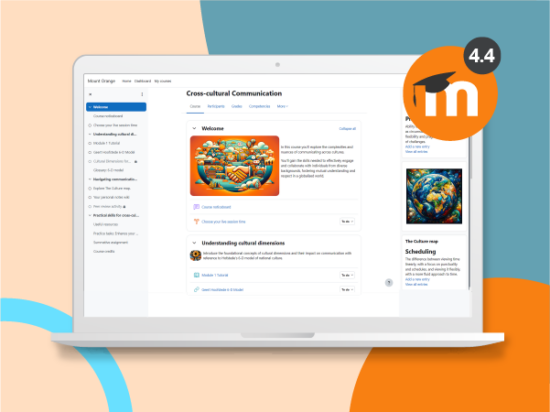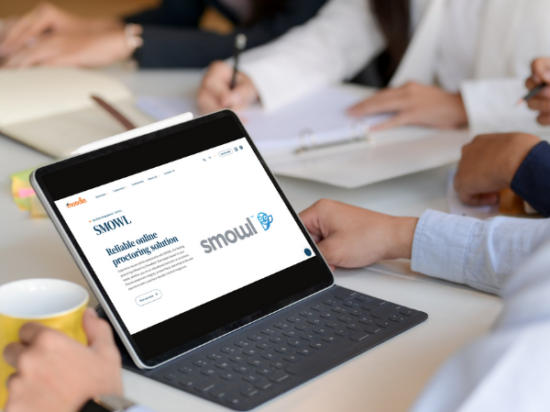Companies are turning to adapt and evolve to the rapid technological changes, global market dynamics, and the ongoing need for skilled talents. According to a recent survey, employees report that there has been a 25% increase in the demand for skills such as AI and machine learning skills and demand for fundamental digital and data science skills. The trend for the increase in demand is expected to double by 2027, and learning and development (L&D) teams play a key role in ensuring that professionals are equipped with the latest and most relevant skills. By providing opportunities for continuous learning, L&D teams can help to develop a workforce that is engaged, adaptable, and resilient enough to face future changes.
In this article, we will look at the benefits of continuous learning, how it can contribute to the most in-demand skills in the present workplace, and how enterprise learning management systems (LMS) such as Moodle Workplace can help your organisation maintain a consistent culture of learning and upskilling.
The benefits of continuous learning in a competitive job market
As technology advances, some skills, like routine data entry and basic assembly line tasks in the financial and manufacturing sectors, are becoming more easily replaceable. For example, in a survey conducted by OECD covering 2,053 firms in the manufacturing and financial sectors, it was found that employers in countries like Austria, Canada, France, Germany, Ireland, the United Kingdom, and the United States expressed the growing importance of talents related to developing and maintaining technological systems.
Employers are recognising the need for cognitive and versatile skills alongside machine learning and data science skills, and are investing in retraining or upskilling their current workforce to address this.
Continuous learning can play a crucial role in meeting these requirements and can be highly beneficial to a workforce that not only meets expectations but anticipates and adapts to organisational developments.
Staying up-to-date with the most in-demand skills
From 2023 to 2027, the top priorities for skills training are analytical thinking, constituting an average of 10% of training initiatives, and creative thinking, with 8% of upskilling initiatives dedicated to its promotion. Cognitive skills, particularly complex problem-solving abilities, are witnessing a surge in importance, highlighting the need for employees to hone their analytical and creative thinking capacities. There is a significant difference in the approach that corporations take towards upskilling their staff. Companies are placing heightened importance on skills such as AI, big data, leadership, and social influence, signalling a forward-looking approach that anticipates the future needs of the workforce.
In response to this shift, organisations now value socio-emotional attitudes that nurture lifelong learning, curiosity, resilience, flexibility, agility, motivation, and self-awareness. This focus shows that businesses are starting to see the importance of workers who like to keep learning and have the right emotional skills to handle work transitions.
This is why employees who actively acquire cognitive and specialised skills position themselves as indispensable contributors in a landscape where staying ahead of emerging trends is synonymous with professional success.
Increased employability
In the contemporary job market, where a ‘skills-first’ approach to talent management is gaining prominence, continuous learning significantly boosts employability as employers increasingly prioritise an individual’s skills and competencies over traditional qualifications, job histories, or titles.
On the other hand, as organisations reshape their business models, look for strategic ways to reduce costs, and manoeuvre through external economic challenges, the need for the right skills within the workforce is a critical concern. Continuous learning equips employees with versatile and up-to-date skill sets. It not only compensates them for their current roles but also enhances their ability to build and retain critical skills vital for the organisation’s success.
Internal mobility
Through continuous learning, organisations can nurture a pool of talented individuals who are not only capable in their current roles but also well-equipped for advancement within the company. In fact, internal mobility carries substantial advantages, significantly reducing hiring costs and time and creating a workforce that is both skilled and deeply rooted in the company’s values.
Moreover, building a culture of internal mobility enhances the overall employee value proposition. It attracts top talents as well as improves morale among existing employees, creating an environment conducive to productivity and professional growth. Also, frequent internal promotions send a message to current employees and competitors that the organisation retains exceptional talent. This also diminishes the necessity for extensive external talent scouting.
Promoting workforce development encourages a culture of continuous learning that aligns with organisational growth plans, ensuring that the workforce remains proficient and capable of harnessing the full potential of emerging technologies.
Promoting continuous learning in the workplace
Moodle Workplace 4.3 is a powerful tool for continuous learning in the workplace, offering innovative features that cater to fundamental needs. The automatic assignment or reassignment of Learning Plans ensures learners receive personalised, competency-based training aligned with their current positions and career trajectories, amplifying the overall effectiveness of their training experiences.
Another feature that helps L&D managers is the ‘People Management’ functionality, which offers instant insights into personnel and their roles. It streamlines the management of reporting lines and job assignments, making it easier to manage reporting lines across complex organisation structures.
By setting reporting lines, L&D managers will enable Team Leads to identify their team members requiring additional support or training directly from their ‘My Teams’ tab in their dashboard.
The seamless process introduced by “People Management” proves especially valuable during onboarding, allowing training coordinators to efficiently assign new team members to roles, link them with overseeing managers, and enrol them in relevant training programs.
Moreover, Moodle Workplace’s update of ‘Public custom pages’ transforms the platform into a dynamic hub for internal and external community engagement. L&D managers benefit from this feature to showcase courses, share company news, and provide valuable insights. It is a powerful tool for marketing courses and training modules to a broader audience, amplifying the reach of continuous learning initiatives.
Moodle Workplace’s capabilities allow the platform to adapt to the unique needs of the contemporary workplace, facilitating and enhancing continuous learning.
Conclusion
Staying on top of sought-after skills is vital for ongoing personal and organisational success. Continuous learning isn’t just about enhancing current job performance; it’s also about staying current with new technologies, navigating the job market, and fostering a workplace culture that values ongoing learning and development.



